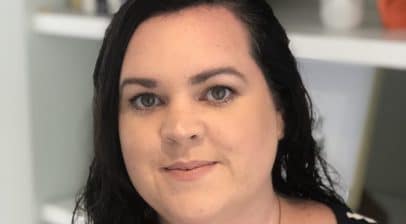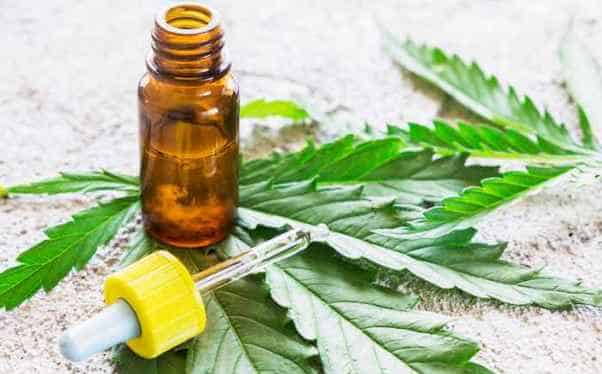The use of medicinal cannabis and cannabidiol (CBD) in children with autism is receiving an increasing amount of attention in the current media, writes researcher Emily Acraman.

Emily Acraman
THERE ARE A growing number of articles and parental reports that discuss, the success of cannabidiol (CBD) as a treatment for children and individuals on the autism spectrum (Gee, 2019).
However, the clinical research to support these findings remains nearly nonexistent. As it stands today, the existing evidence does not support that CBD and similar products should be recommended as a treatment for autism (Salgado & Castellanos 2018).
What is medicinal cannabis?
Medicinal cannabis encompasses a huge range of products, from those which have undergone clinical testing and have been determined to meet medical standards, through to the non-pharmaceutical grade products (commonly associated with recreational use). It is important to understand the various terms associated with medicinal cannabis products that are currently being used by the public, as well as pediatric researchers in the autism field. Cannabis is a general term that refers to the three species of hemp plants (Cannabis sativa, Cannabis indica, Cannabis ruderalis). Marijuana is a term that refers to the dried leaves, flowers and stems which are often smoked for medical and recreational purposes. Marijuana contains more than 100 different chemicals, however the two main chemicals used in the medical application of cannabis are:
- Tetrahydrocannabinol (THC) – this is the psychoactive component in marijuana (the chemical that produces the ‘high’)
- Cannabidiol (CBD) – this is a substance found in cannabis that is seen to have potential therapeutic value, with little or no psychoactive properties.

The World Health Organization notes that CBD ‘could have’ therapeutic value, does not carry any addiction risks and is generally well tolerated with a good safety profile (World Health Organization, 2018).
Since 2018 doctors in New Zealand have been able to prescribe CBD products as prescription medicine after a bill saw cannabidiol removed from the list of controlled drugs. A person with a prescription is now able to import CBD products for personal use. This law change brought New Zealand into line with other countries, such as Australia who passed a similar bill in 2015 (Misuse of Drugs (Medicinal Cannabis) Amendment Bill 2018).
What does the research say?
Although the use of medical cannabis to treat children on the autism spectrum is gaining popularity, there is still a significant lack of clinical research which proves CBD and similar products to be a safe and effective treatment for children with autism. A 2019 Israeli study looking at the safety and efficacy of cannabis oil (containing 30% CBD and 1.5% THC) showed that 80% of parents reported a moderate to significant improvement in their autistic child’s behaviour following a six-month treatment period using cannabis oil (Schleider, Mechoulam, Saban, Meiri, & Novak, 2019).
However, the results of this are based on parental reports and no control group was used in the study so the findings should be interpreted with caution. There is also currently another Israeli study underway looking at cannabinoids for behavioural problems in children with autism which will carry more scientific weight. However, no results of this study are available yet and it is unknown when they will be available (Aran, 2018).
There are also concerns within the current research due to the differences in strains and strengths of the active chemical components in cannabis being used. This refers to the concentration and ratios of the THC and CBD within a product. These inconsistencies make it difficult to make safe dosing recommendations especially for use with children. This has been a subject of interest not only for medical professionals, but also for government legislators (Madras, 2015). Also, there is also very little known about the long-term hazards of regular cannabis use especially in the child population and this remains a critical area for future study (Hadland, Knight, & Harris 2015).
Summary
While there are anecdotal reports to suggest CBD and similar medicinal cannabis products may be a promising intervention for children with autism, it currently remains an unproven treatment. The research is only in the very early stages and as such, there are still many questions that remain unanswered. The safety profile and recommended dosing levels of the use of CBD for autistic children – is still not properly understood. It is also not clear – what specific symptoms are most likely to improve under cannabis treatment (Salgado & Castellanos 2018). – There is a lot of interest in this topic both nationally and internationally, and more research will increase our knowledge in this area over the next few years.
However, given the lack of evidence-based research medicinal cannabis cannot be safely recommended for the treatment of autism at this time.
- Emily Acraman is a researcher at Altogether Autism.
- This article first appeared in the Altogether Autism Journal, Issue 1, 2019
References
Aran, A. (2018). Cammabinoids for behavioural problems in autism spectrum disorder: a double blind, randomized, placebo-controlled trial with crossover. Clinical Trials Registry. Retrieved from https://ichgcp.net/clinical-trials-registry/NCT02956226
Campbell, C., Phillips, M., Manasco, K. (2017). Cannabinoids in Pediatrics. The Journal of Pediatric Pharmacology and Therapeutics, 22(3), 176-185
Gee, S. (2019, April 14). Father credits cannabidiol oil with boosting autistics son’s quality of life. Sunday Star Times. Retrieved from https://www.stuff.co.nz/national/health/111923307/father-credits-cannabidiol-oil-with-boosting-autistic-sons-quality-of-life
Hadland, S.E., Knight, J.R., & Harris, S. (2015). Medical Marijuna: Review of the science and implications for developmental-behavioral pediatric practice. Retrieved from https://www.ncbi.nlm.nih.gov/pmc/articles/PMC4318349/
Misuse of Drugs (Medicinal Cannabis) Amendment Bill 2018. Retrieved from https://www.parliament.nz/en/pb/bills-and-laws/bills-proposed-laws/document/BILL_75877/misuse-of-drugs-medicinal-cannabis-amendment-bill
Salgado, C.A., & Castellanos, D. (2018). Autism spectrum disorder and cannabidiol: Have we seen this movie before. Global Pediatric Health, 5. Retrieved from https://www.ncbi.nlm.nih.gov/pmc/articles/PMC6287295/
Schleider, L.B., Mechoulam, R., Saban, N., Meiri, G., & Novak, V. (2019). Real life experience of medical cannabis treatment in autism: analysis of safety and efficacy. Scientific Reports, 9(1). Retrieved from
World Health Organization. (2018). Cannabidiol (CBD): Critical review report. Retrieved from https://www.who.int/medicines/access/controlled-substances/CannabidiolCriticalReview.pdf


